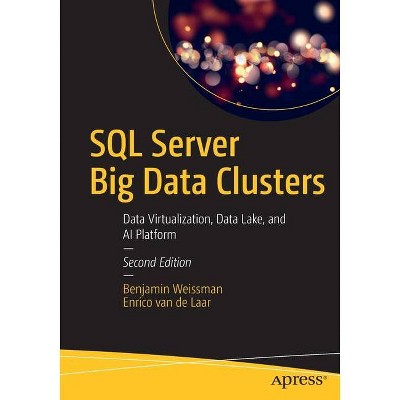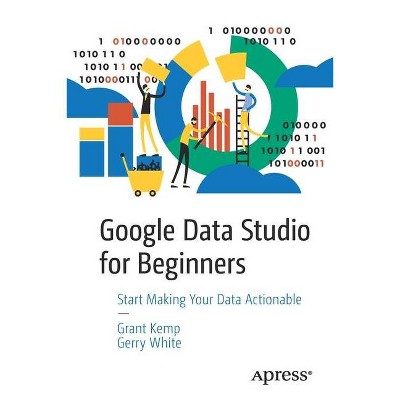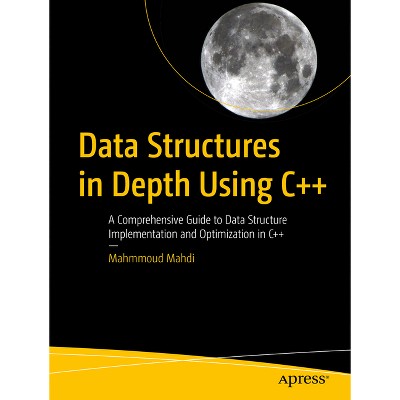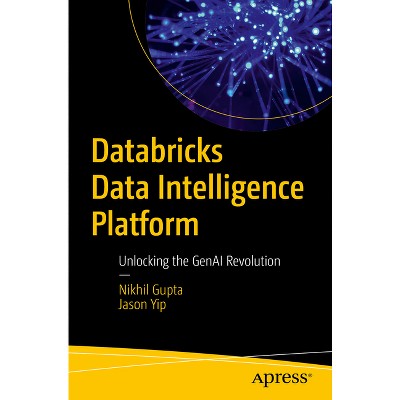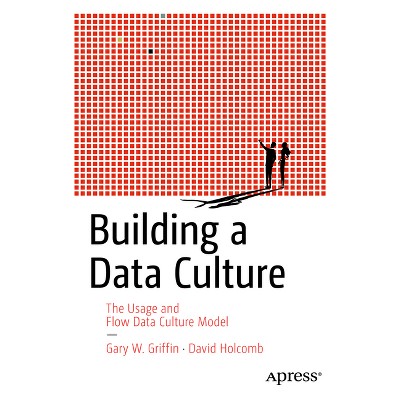$53.99 sale price when purchased online
$59.99 list price
Target Online store #3991
About this item
Highlights
- Teaches Docker principles with practical examplesCovers high-performance interactive computing with JupyterPresents a unique development method geared toward interactive computing
- About the Author: Joshua Cook is a mathematician.
- 257 Pages
- Computers + Internet, Databases
Description
About the Book
Learn Docker "infrastructure as code" technology to define a system for performing standard but non-trivial data tasks on medium- to large-scale data sets, using Jupyter as the master controller. It is not uncommon for a real-world data set to fail to be easily managed. The set may not fit well into access memory or may require prohibitively long processing. These are significant challenges to skilled software engineers and they can render the standard Jupyter system unusable. As a solution to this problem, Docker for Data Science proposes using Docker. You will learn how to use existing pre-compiled public images created by the major open-source technologies--Python, Jupyter, Postgres--as well as using the Dockerfile to extend these images to suit your specific purposes. The Docker-Compose technology is examined and you will learn how it can be used to build a linked system with Python churning data behind the scenes and Jupyter managing these background tasks. Best practices in using existing images are explored as well as developing your own images to deploy state-of-the-art machine learning and optimization algorithms. What You'll Learn: Master interactive development using the Jupyter platform Run and build Docker containers from scratch and from publicly available open-source images Write infrastructure as code using the docker-compose tool and its docker-compose.yml file type Deploy a multi-service data science application across a cloud-based system.Book Synopsis
Teaches Docker principles with practical examplesCovers high-performance interactive computing with Jupyter
Presents a unique development method geared toward interactive computing
From the Back Cover
Learn Docker "infrastructure as code" technology to define a system for performing standard but non-trivial data tasks on medium- to large-scale data sets, using Jupyter as the master controller.It is not uncommon for a real-world data set to fail to be easily managed. The set may not fit well into access memory or may require prohibitively long processing. These are significant challenges to skilled software engineers and they can render the standard Jupyter system unusable.
As a solution to this problem, Docker for Data Science proposes using Docker. You will learn how to use existing pre-compiled public images created by the major open-source technologies--Python, Jupyter, Postgres--as well as using the Dockerfile to extend these images to suit your specific purposes. The Docker-Compose technology is examined and you will learn how it can be used to build a linked system with Python churning data behind the scenesand Jupyter managing these background tasks. Best practices in using existing images are explored as well as developing your own images to deploy state-of-the-art machine learning and optimization algorithms. What You'll Learn:
- Master interactive development using the Jupyter platform
- Run and build Docker containers from scratch and from publicly available open-source images
- Write infrastructure as code using the docker-compose tool and its docker-compose.yml file type
- Deploy a multi-service data science application across a cloud-based system
About the Author
Joshua Cook is a mathematician. He writes code in Bash, C, and Python and has done pure and applied computational work in geo-spatial predictive modeling, quantum mechanics, semantic search, and artificial intelligence. He also has 10 years experience teaching mathematics at the secondary and post-secondary level. His research interests lie in high-performance computing, interactive computing, feature extraction, and reinforcement learning. He is always willing to discuss orthogonality or to explain why Fortran is the language of the future over a warm or cold beverage.Dimensions (Overall): 9.21 Inches (H) x 6.14 Inches (W) x .6 Inches (D)
Weight: .88 Pounds
Suggested Age: 22 Years and Up
Sub-Genre: Databases
Genre: Computers + Internet
Number of Pages: 257
Publisher: Apress
Theme: General
Format: Paperback
Author: Joshua Cook
Language: English
Street Date: August 25, 2017
TCIN: 1003346625
UPC: 9781484230114
Item Number (DPCI): 247-25-8307
Origin: Made in the USA or Imported
If the item details above aren’t accurate or complete, we want to know about it.
Shipping details
Estimated ship dimensions: 0.6 inches length x 6.14 inches width x 9.21 inches height
Estimated ship weight: 0.88 pounds
We regret that this item cannot be shipped to PO Boxes.
This item cannot be shipped to the following locations: American Samoa (see also separate entry under AS), Guam (see also separate entry under GU), Northern Mariana Islands, Puerto Rico (see also separate entry under PR), United States Minor Outlying Islands, Virgin Islands, U.S., APO/FPO
Return details
This item can be returned to any Target store or Target.com.
This item must be returned within 90 days of the date it was purchased in store, shipped, delivered by a Shipt shopper, or made ready for pickup.
See the return policy for complete information.








